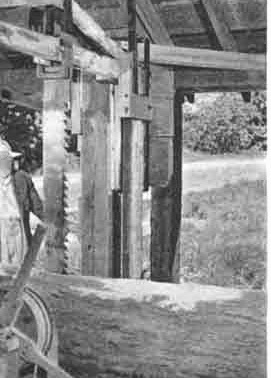A previous blog mentions that a shopping trip was usually on a Saturday. This would be a trip to Rockland or Brockton, the closest cities. I would get piled into the old Chevy and off we would go.
Up Summer Street and left on Pleasant Street. Through the abandon Railroad bridge with great granite walls on both sides.
Next on the left, was Gino Rugani's huge Sterling trucks parked on Dog Lane.
A great sight for a young truck guy.
The Peacock Tea Room on the right was my favorite place for an ice cream.
Fields of tomatoes lined both sides of Pleasant Street.
Just before Canoe Tree Street, on the left, was Ruthven Farm.Two huge stone pillars were on each side of the driveway that led up the hill to a sheep farm. They also had a peach and apple orchard. The field was full of sheep grazing. On occasion the collies were amongst them. The collies were left to roam and to my delight they would visit my back yard for a scratch and a treat.
Left on to Canoe Tree Street. I was told that there were huge birch trees once where the pines now stand, and that the Indians made canoes from the bark of the trees. [As told to Philip Randall by an old timer from the Hills.]
A left on Route 3A [Main Street], then a right on Pine Street, with Murphy's Chicken farm on the left where St. Christine's now stands. Next on the right was the Pine Street dump, usually burning or smoldering. See my blog of 6/6 2011.
Through the Forest Street intersection and down the hill. Dad would throw it into neutral to coast, saving on gas. Half way down Pine Street on the right was a cottage with brick pillars on both sides of the driveway. Just after the cottage was a brick yard and factory. Although in disrepair, it was steaming from the hot kiln.
A clay pit was just after the mill. It was owned by Pete, or at least that's what my Dad called him. Later in years my Dad would get clay from this pit to recondition clay tennis courts he cared for after WW2.
As we slowed to turn onto Union Street, my Dad would point to the old saw mill across Union Street.
He would say, ''That's one of the oldest mills in the country.''
Note the pile of logs right of the shed.
 |
| Photo by Ray Freden |
The spring of 1946, the corner of Pine and Union Street became a show place for whirligigs and lawn decorations. Franklin S. Hatch, the son of F. Decker Hatch, was making lawn decorations in his Dad's cellar and displaying them on the front lawn for sale. This was in addition to working at the Hatch mill as sawyer with his Dad and the Fish brothers.
Franklin was also a devoted trapper. He ran a trapline along the North River. Mostly for muskrat, however beaver, otter, weasel, and fox were also taken. He sold the pelts to a buyer in Hanover. Years later, Franklin had told me that during the depression that muskrat hams [the rear legs] were a common dinner at the Hatch's.
In 1947 my Dad went to the mill to buy lumber. There I met Franklin -- he showed me how the saw worked. I was amazed by how easily the saw cut the logs. and how close Franklin was to that buzzing saw! From then on I paid a little more attention to the goings on as I passed that corner.
By 1949, I was developing a passion for woodworking. About 1952 or 3 Franklin got married and settled in at 587 Pine Street. During the first years there, Franklin constructed a model of his Dad's sawmill, "Hatch Mill." He situated it on a small brook behind his home. He built a dam with a spillway that fed the water wheel that operated the saw. The original Hatch Saw Mill had an up and down saw as shown below. A circular saw replaced the slow outdated up and down saw. Franklin's model was fitted with a circular saw, complete with a log mounted on the carriage. Wood pinned post and beam construction was used and miniature wood shingles on the roof. A small pile of miniature logs sat nearby the mill as if to be rolled in at anytime.
This sketch reminds me of Franklin's model.
The up and down saw traveled forward 3/8'' on the downward stroke.
 |
| Although this is not the Hatch Mill, it is similar. |
As we traveled on Union Street, there was a big white house on the left side with a tennis court, a park with a small golf course, it looked like a fun place.I always wondered why and who would have such a wonderful place. Not until recently have I learned who owned it and why it existed, a mystery to me for years! A very talented man by the name of Erle Parker and his wife were the owners from the mid 20s to the 60s. I have recently received the following from their Grand Daughter Nancy.
 |
| Magoun Cemetery, off Union Street. |
 |
| The Wayside Press, Union Street. |
-Nancy Parker Huntley
Thank you Nancy.
A short distance west on Union Street we crossed the Pembroke line, now on Oak Street. We came to Route 139, the Red Road, yes it was red. Route 139 was built during the depression by the WPA [Works Progress Administration]. My Dad worked for the WPA a few weeks in 1934 and said he worked on the sidewalks.
On the corner was a favorite stop, the Standish Trading Post. Now a Gulf Gas Station.
by Ray Freden, Marshfield, 70 years.
"My memories are like a shuffled deck of cards, each one comes up at random."
- Brian James

MBO688MTmbw~~60_57.jpeg)

